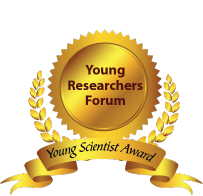
Marc Borsotto
Université de Nice Sophia Antipolis, France
Title: Spadin and its analogs: A new concept in antidepressant drug design
Biography
Biography: Marc Borsotto
Abstract
From the posttranslational maturation process of sortilin, we identified a 17 aminoacid peptide, called spadin as a new antidepressant drug concept. Spadin exerts its antidepressant actions on the TREK-1 potassium channel, a novel antidepressant (AD) target. We showed that spadin acts more rapidly in comparison to other ADs. We have pointed out that spadin induced neurogenesis after only 4-day treatments. We demonstrated that spadin did not display side effects at the cardiac level and on TREK-1 controlled functions such as stroke, epilepsy or pain. With the final goal to make spadin a drug for human clinic, we sought analogs of spadin demonstrating a better affinity or a better in vivo stability or both. By electrophysiology on HEK293 cells stably transfected with TREK-1 channels, several analogs were tested for their ability to block the TREK-1 channel activity. AD effects were measured by using the forced swim and novelty suppressed feeding tests. Synaptogenesis was investigated by measuring the expression level of the synaptic protein PSD-95 in in vitro cultured neurons. Our data allow us to identify a shortened spadin, called mini-spadin, that displayed the same AD properties as spadin and a 400 fold increase in the TREK-1 affinity. Mini-spadin increased the synaptogenesis marker PSD95 levels after only 24 hours of treatment, suggesting that like spadin, mini-spadin was able to induce neurogenesis and synaptogenesis. Even if further experiments are required, the mini-spadin appears to be more efficient than spadin offering a very promising alternate to spadin as human drug.

